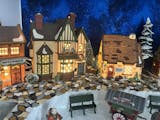What Is Embroidery, And Why Do We Embroider?
Embroidery is the process of sewing thread through a fabric piece, creating a design. It's been around for centuries and is still used in different ways. Whether it's for clothing, accessories, or home decor, embroidered pieces are unique and add an extra level of detail and customization to your project.
There are many reasons why people embroider: as a hobby, for personal use, or commercial purposes. Embroidery can be used on any fabric type, making it versatile and adaptable. So if you're interested in trying out this fun craft but don't know where to begin, check out our guide below!
Types of Fabric for Embroidery: Weave Vs. Non-Woven
Embroidery fabric is composed of different types of materials that are woven or non-woven. Fabric weave refers to the type of thread used in a particular piece of fabric, while non-woven refers to the material from which the threads are made.
The three most common embroidered fabrics are woven cotton, rayon, and silk. These fabrics can be either plain or printed and come in various colors and patterns.
Woven cotton is the most commonly used embroidery fabric because it is easy to work with and comes in various colors and patterns. It also has a good drape and breathability, making it ideal for summer wear.
Rayon is a synthetic fiber that is quite strong but also lightweight.
What Type Of Fabric Is The Best For Embroidery?
Embroidery fabric is the type of fabric that can be used for many different embroidery projects. Each has its own unique benefits and drawbacks. Some embroidery fabrics are more suited for lightweight projects, while others are better for heavier fabrics.
Some embroidered materials can be expensive, so it is important to choose the right type of fabric for your project. Embroidered fabrics come in a variety of weights and textures as well; therefore, keep the intent of use in mind during the final selection.
Embroidery On Woven Fabrics: Overcasting And Backstitch
Embroidery on woven fabrics is a popular embellishment technique that can be done with backstitch or overcasting. Backstitch embroidery is a machine embroidery where the thread is pulled through the fabric by hand.
Overcasting stitches are small stitches placed over existing stitches and drawn through both fabric layers to create a raised, finished stitch. Both techniques have their advantages and disadvantages.
Backstitch embroidery is preferred for detailed work due to its manual nature. This method is also good for highly resistant materials, such as polyester and cotton, because the thread doesn't fray easily. However, backstitch can be time-consuming and difficult to learn, so it may not be suitable for beginners.
Conclusion
Embroidery fabric is one of the most popular fabric types because it is versatile and has a wide range of applications. It can be used for clothing, home decor, and car seats. There are many different designs to choose from, so you can find the perfect pattern for your project.
Some embroidery fabrics are even fire retardant, so you can use them in areas that may be dangerous if ignited. Additionally, they are waterproof, making them feasible for areas that may get wet.
When choosing an embroidery fabric, make sure to consider the weight and texture of the fabric. Some heavier ones will require more stitches to complete a project than lighter fabrics. Also, pay attention to the feel before making a purchase.
- Royal Motif
